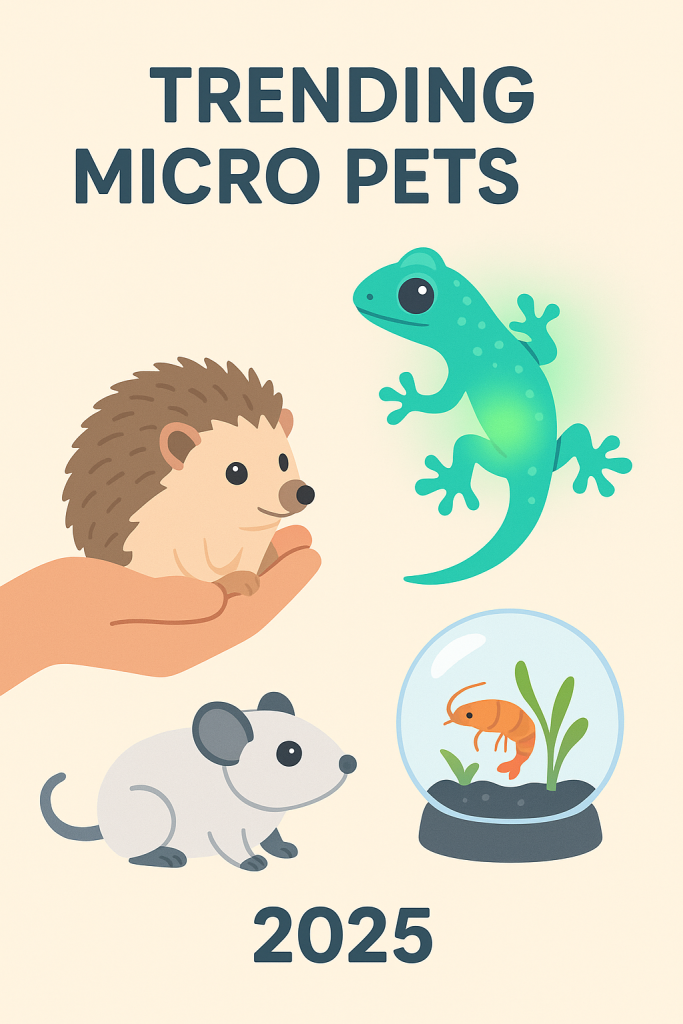In 2025, the pet world has gone miniature. From teacup-sized reptiles to robot hamsters that respond to your mood, “micro pets” are redefining what companionship means in the modern age. Compact, quiet, and surprisingly emotional, these palm-sized creatures are capturing hearts across crowded cities and digital lives. But behind the cuteness lies a fascinating intersection of biology, technology, and psychology.

The rise of micro pets is no accident. Urban living spaces are shrinking, and people are spending more time online than outdoors. Yet, the desire for emotional connection hasn’t changed—only its form has. Instead of traditional cats or dogs, city dwellers are turning to small, low-maintenance companions that fit into their lifestyle without sacrificing affection.
One of 2025’s best-selling micro pets is the “Nano Hedgehog”, a selectively bred pygmy species weighing less than 150 grams. With its expressive eyes and soft temperament, it has become the new face of “pocket pets.” Breeders have focused on sustainability—feeding it on minimal water and plant-based diets—making it both eco-friendly and adorable. Another viral hit is the “Glow Gecko,” a bioluminescent reptile developed through safe genetic selection. Its faint glow under ambient light makes it popular among younger pet owners who want something futuristic yet alive.
The tech world, not to be outdone, has entered the arena with AI-driven robotic pets. The “MicroPaw Series X,” for example, fits in your palm and mimics real animal behavior—blinking, nuzzling, even recognizing your voice. Unlike older robot toys, these micro pets evolve over time through machine learning, forming a personality that feels uncannily real. For many people balancing work-from-home and constant digital noise, these companions provide silent emotional support without fur, allergens, or vet bills.
Surprisingly, fish have also made a comeback in micro form. The “Mini Aquapod Ecosystem”—a closed, self-cleaning sphere housing tiny freshwater shrimp and moss—has become a design statement for minimalist homes. It’s not just decoration; it’s a living, breathing ecosystem that mirrors nature’s balance, reminding owners of their connection to the planet in the smallest possible space.
The trend toward micro pets also reflects shifting cultural values. Younger generations view pet ownership less as dominance over an animal and more as coexistence with another life form, however small. Owning a micro pet isn’t about control—it’s about mindfulness. Caring for a creature so delicate requires presence, patience, and respect, qualities increasingly scarce in a fast-paced world.
Yet, experts caution that even micro pets need macro care. Many of these tiny beings have specific temperature, light, or dietary needs that can’t be ignored just because they’re small. Organizations are now advocating for “micro-ethics” in pet ownership—ensuring that novelty doesn’t overshadow responsibility.
Ultimately, the micro pet boom of 2025 isn’t just about miniaturization—it’s about meaning. In a world of excess, we’re learning that connection doesn’t have to be large or loud. Sometimes, the quiet companionship of a glowing gecko or a learning robot mouse can remind us of something profound: love, curiosity, and empathy can thrive even in the tiniest of hearts.
